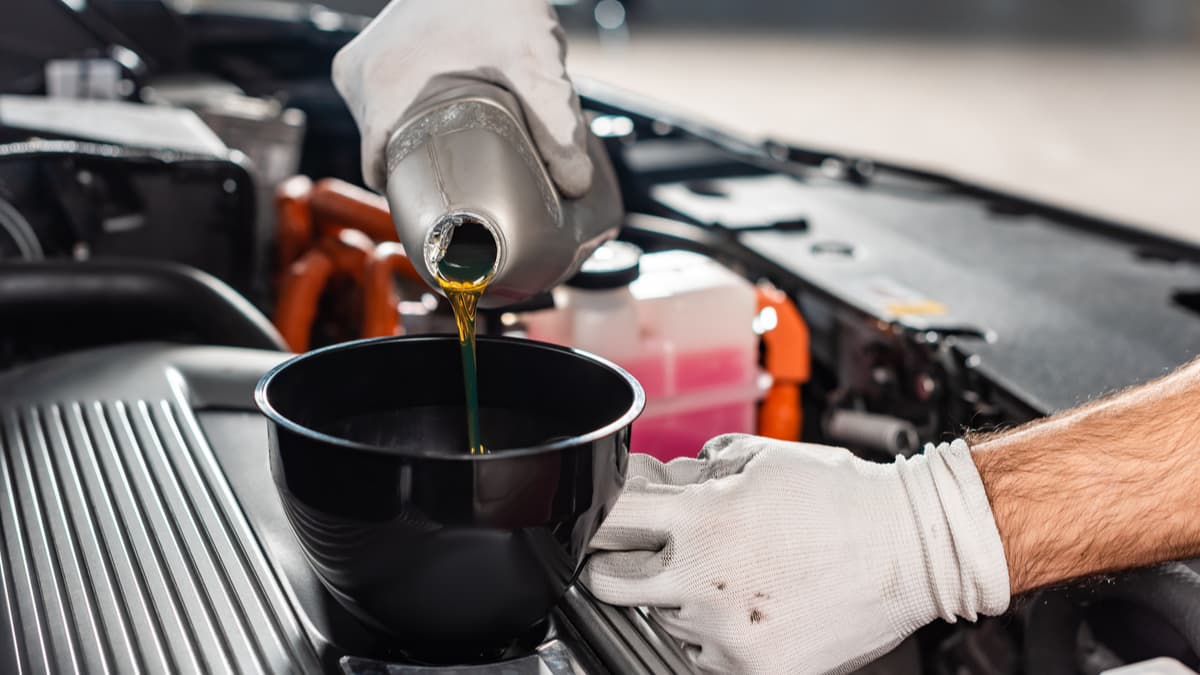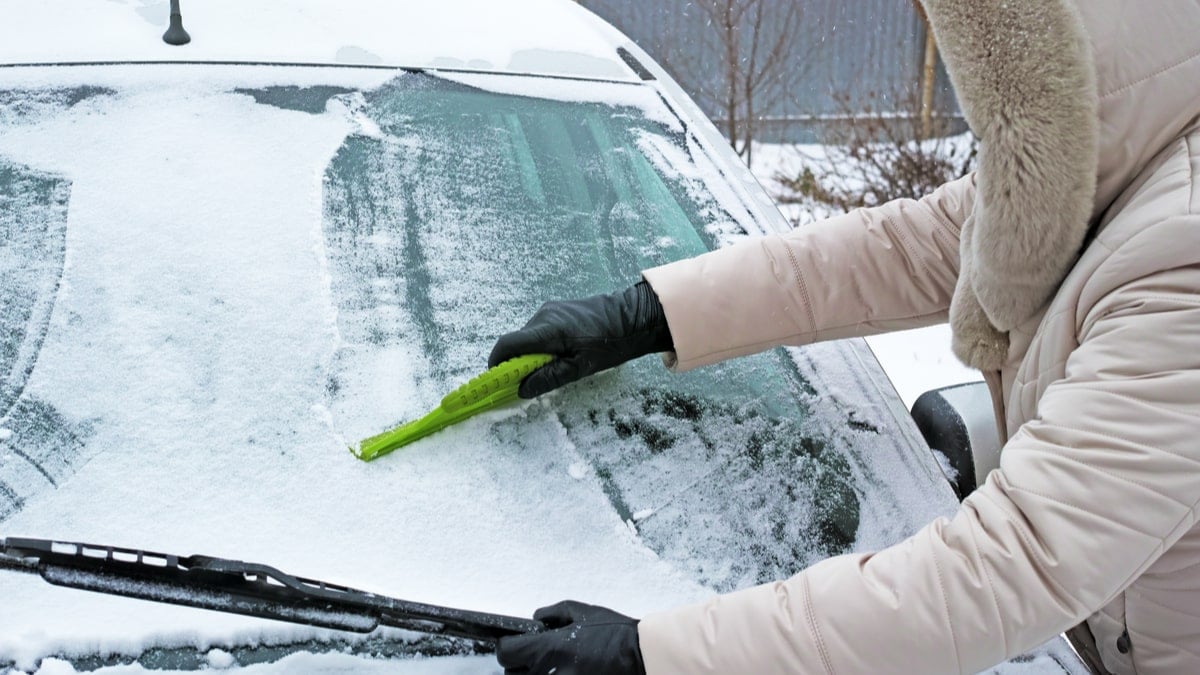There could be many reasons you want to store your car for a long time, but one of the most common reasons is probably storing classic cars during the winter.
The last thing you want to happen is to find damage on your car when you take it out after long-term storage.
The most common problems include mice, rats, and other rodents that want to make your car their home, as well as rust or corrosion.
How to Store a Car Long Term
1. Fill the tank
Even if many people think of doing the opposite, filling up the fuel tank is the first step you should take if you plan to store the car for longer than a month.
The reason for this is to prevent moisture from accumulating inside the fuel tank. Another reason is to make sure the sealings in the tank will not dry out.
You can also add fuel stabilizer additives to ensure the fuel won’t deteriorate for the next 12 months.
2. Change the engine oil
There has also always been a long debate as to whether you should change the engine oil before or after long-term storage. I recommend changing the engine oil before long-term storage, because old engine oil can be rough on gaskets and other parts inside the engine.
It is better to have fresh engine oil that will protect the engine’s insides, rather than cause damage.
RELATED:
Oil Change: How to Change Engine Oil at Home in 10 Steps3. Top up all of your vehicle’s fluids
Another easy but important thing to do before long-term storage is to fill up all the fluids in your vehicle. This includes power steering fluid, coolant, transmission fluid, brake fluid, and engine oil.
Also, check the coolant’s freezing point with a tool to prevent it from freezing if you store your car in a cold garage. Coolant also prevents the engine from rusting on the inside, so you definitely want to make sure the coolant system hasn’t merely been filled with water..
4. Identify the right storage location
The ideal location for a car should be well ventilated and free from moisture. A heated garage is also something you want to have if you live in a colder country, at least a storage place that holds the temperature above the freezing point. It should also preferably be sealed against rodents. Rodents cause devastating damage to the seats and electrical components of a car.
5. Check the paperwork
If you are not going to use your car for more than six months, it is advisable to ensure that all the paperwork is done. You may also need to inform your insurance agent that you will not be using the car. This will protect you if something happens to the car.
If you decide not to renew your insurance, it is advisable to set reminders not to drive a car that is not insured when you return.
6. Put the car on jack stands
Tires can become deformed and create flat spots if standing for a long time on the same point. This can cause vibrations that can be difficult to get rid of after taking your car out of storage. Use jack stands to release the pressure on the car’s tires.
If you do not have any jack stands, you should make sure that the tires are inflated with the
right tire pressure.
7. Charge Battery & Remove the terminals
Leaving a cary battery unused in low temperatures with low charge for an extended period of time will seriously damage it. To prevent this, you can
charge the car battery fully and remove the battery terminals before storage.
Cars always drain a small amount of power from the battery, even if the car is not being used. If you remove the terminals, you prevent your battery from draining and needing to jump-start the car when you return. You can also take the car battery into a warm place during storage.
8. Use a car cover
A
car cover protects your car from many harmful particles in the air, including moisture which could cause rust. It also keeps your car protected from birds, cats, or other animals that want to sit on your car and scratch it up.
A good car cover should cover the whole car – not just small parts of it.
9. Lubricate car
A good practice before long-term storage to prevent your doors from freezing or getting damaged is to lubricate the hood, doors, and trunk latches with silicone spray.
This will prevent them from rusting and getting stuck when taking your car out from the storage.
10. Wash & Clean both Exterior & Interior
Even if it is far down in this list, washing and cleaning both the interior and exterior properly before long-term storage is very important.
Asphalt and other harmful particles can get stuck in the car’s paint job and cause the car to start rusting during long-term storage. It is important to remove them by washing your car with a special detergant.
Cleaning the interior is also a good practice to keep rats and other rodents out of the car.
RELATED:
How to Prevent Rust on your Car during the Winter11. Cover the Tailpipe
Mice, Rats, and other rodents love to make the exhaust pipe their home. To keep them away, it’s a good idea to cover the tailpipes before long-term storage. Just remember to remove the cover before getting back on the road!
12. Regular Check & drive
If you have the opportunity, you should definitely check your car every now and then, and even take it out for a ride. A test drive with the car ensures that the moving parts are lubricated. During the test drive, you can turn on the air conditioning and other electrical functions to make sure they are still working.
13. Avoid using the parking brake
If you are not going to use your car for a long time, it is advisable to use auto-stoppers instead of the parking brake. Fusion of
the brake pads and discs can occur when you park the car for a long time. If you leave your car’s parking brake engaged during long-term storage, there is a high risk that you will have problems releasing it when you are ready to get back on the road again.
14. Keep rodents out
Unfortunately, mice, rats, and other rodents love to live in cars. They find breeding grounds in the hood and inside the cabin of the car. The biggest problem is that they love to eat electrical wires, which can cause serious damage to your electrical system. To keep rodents away, you can cover the exhaust system and air intake openings.
Peppermint is known to repel rodents. You can spray a little on some cotton balls and then place them in strategic places where rodents like to hide.
You can learn more here:
How to Keep Mice, Rats & Other Rodents out of Your Car15. Keep the interior dry and odour-free
If your car is parked in a location with high moisture, you definitely want to place silica gel packs or other desiccants (dryness-promoting) products to prevent dampness.
This will protecct your car’s interior from moisture and mold, which can cause bad smells that can be really difficult to get rid of later.
Checklist for when you come back
When you return, you must check the car properly before taking it out for a ride. This includes inflating the tires, checking the brake discs for rust, and topping up all engine fluids again.
Check under the hood for rodent infestation. You must clean the car properly, both inside and out. When all this is done, connect the battery terminals. Fill up the engine with the necessary fluids and circulate the engine oil through all engine parts. Your car is now ready for a drive.
Categories: General, Guides, Maintenance

















